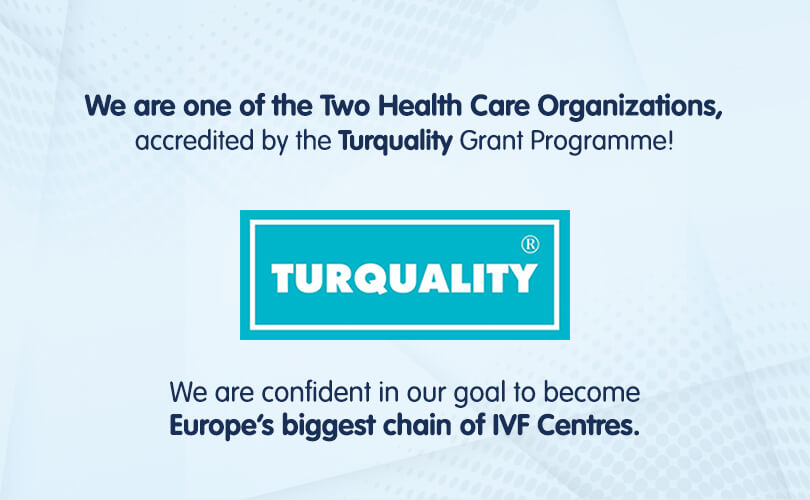What is Embryo Freezing?
Embryo freezing is the process through which embryos formed in the laboratory environment are frozen and stored for later use. While the number of embryos obtained during IVF treatments depends on the treatment performed, it is possible to obtain more than one quality embryo in about 40% of couples.
On the first two IVF attempts, a single embryo is transferred to prospective mothers under the age of 35. If these attempts fail, two embryos are transferred on subsequent attempts. Any remaining embryos can be frozen and stored depending on the decision of the couple.
Who is Embryo Freezing Recommended for?
Embryo freezing is a process that can only be performed on married couples. Embryo freezing is recommended in the following situations:
• When there are unused healthy embryos after the initial transfer during an IVF treatment
• When there is a family history of early menopause
• When there is a question of low ovarian reserve
• When medical procedures impacting the ovarian reserve are planned (surgery, chemotherapy, radiotherapy, etc.)
• Especially in cases where the prospective mother will undergo surgery for endometrioma (chocolate cyst)
• When the couple plan a future pregnancy
In addition to this, embryo freezing is also used as a success-boosting method:
The hormones/medication used during IVF treatments may have a negative impact on the uterine lining. This situation varies depending on the person and the amount of medication used. Embryos are stored frozen while the uterine lining returns to normal in order to avoid this situation. Once the uterus returns to its natural structure, the embryos are thawed, and the transfer is performed. It is possible to achieve high pregnancy rates through this method called the “freeze-all” technique.
Embryo freezing is also useful in cases where a genetic screening on the embryo is planned. Couples carrying a high risk of genetic disorder, and can only produce a limited number of eggs and embryos, can resort to embryo freezing. After several embryos are formed and frozen, all embryos can undergo genetic screening at the same time. Thus, the cost of genetic testing is significantly reduced.
What is the viability rate of frozen-thawed embryos?
It is possible to achieve a 98-99% viability rate on eggs, sperm and embryos effectively frozen, stored, and thawed. High pregnancy rates achieved with frozen cells are the most important indication of the success level of a clinic. If the medical service provided at an IVF centre is at the top level, then the number of frozen materials during or after the treatment is equally high. Therefore, the successful results of a centre achieved using frozen embryos is a good indicator of the success of the centre itself.
The technique used during the freezing and thawing processes, the technological equipment and the experience of the embryologists are the most important factors affecting the success of the treatment. While many IVF centres provide embryo freezing and thawing services, there is a serious difference between the success rates of the treatment because of the previously mentioned factors. Thanks to its state-of-the-art embryology laboratories and experienced embryologists, Bahçeci clinics achieve high success rates in embryo freezing and thawing processes. Bahçeci clinics perform egg, sperm and embryo freezing processes through the vitrification method.
How is Frozen Embryo Transfer performed?
The transfer is usually carried out 3-6 days after the ovulation period. The stage at which the embryo was frozen influences the date of the transfer. Blood hormone levels (E2, LH, and progesterone) are monitored, and no medication is given until the day of transfer. Following the embryo transfer, supportive progesterone treatment may be started depending on the preference of the physician.
Before frozen embryo transfer, it is necessary to prepare the uterus for pregnancy. This preparation process can be carried out through the “natural cycle” of the prospective mother, i.e. by monitoring the growth and cracking of the egg during the menstrual cycle of the patient, without the use of any medication. It is essential to have a regular menstrual cycle for this process to yield successful results. Additionally, we also frequently use a “medicated FET (frozen embryo transfer)” method to prepare the uterus for transfer in cases where there is no egg growth. There is also a “modified natural cycle” option which we use less frequently, where egg growth is stimulated through medication, and transfer is carried out after a trigger injection.
Embryo transfer is a simple and painless procedure that does not require anaesthesia. Some patients may require anaesthesia due to vaginismus or anxiety. Successful embryo transfer is achieved through short-term sedation during this procedure. During the embryo transfer, the patient lies in the lithotomy position. A speculum is used to clean the vagina and cervix with a sterile solution. The embryologist loads the embryos to be transferred into a special injector. The physician then transfers the embryo into the uterus with the help of a thin catheter, and ultrasound imaging. The embryo transfer requires an external abdominal ultrasound; therefore, the patient must come in with a full bladder. This allows the physician to better visualise the uterus, and to easily transfer the embryo into the uterus.
Are babies born from frozen embryos expected to heave health problems?
According to the available literature, there is no difference in congenital anomaly between babies born through frozen embryo transfer and the others. Frozen embryo practices are considered safe in light of present-day knowledge.
How much does embryo freezing cost?
Due to the current legislation, we cannot publish our embryo freezing price information on our website. To learn more about our current price information and to have a free pre-consultation with our doctors, please fill in our contact form or call us at +90 444 3 949.





